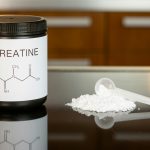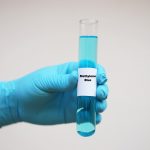An athlete may suffer injuries that are caused by either acute trauma or overuse. Let’s discuss the difference between overuse injuries and traumatic injuries and how to handle them.
Traumatic Injuries Defined
Traumatic injuries are often violent and sudden, such as sprains, lacerations, torn ligaments, pulled muscles or broken bones by a fall. Immediate professional treatment is usually required. The injury should be examined if there is immediate swelling, pain, the inability of the injured body part to be used or severe pain that lasts for 30-40 minutes or more. If you hear or feel a crack, tear or pop and there is persisting pain, you need to get your client professional help right away.\
Overuse Injuries Defined
Overuse injuries are more common and develop over a long period of time due to mild or low-grade, repeated stress. Overtraining results in overuse injuries. This kind of injury is sometimes also associated with anatomical variations, such as flat or high arches, or an abnormally sized or positioned kneecap. The knees (i.e. Iliotibial Band Syndrome, Runner’s Knee, etc.) and the Achilles tendon (i.e. Tendonitis) are affected the worst by overtraining.
The pain from overuse injuries is normally not severe and is often ignored by the athlete. Whether or not professional help is required is more difficult to determine when the injury stems from overuse. A medical professional should be seen if the following self-care treatments do not make the pain subside within ten to fourteen days. Ice and heat, decrease their level of activity, stretching, and aspirin or ibuprofen are advised.
Overuse injuries may be due to biomechanical problems created by anatomical variations or postural dysfunction, such as flat or high arches. More than half of all overuse injuries are due to training errors. For runners, the body is stressed by each run, so daily high-intensity training does not allow the body adequate time to adjust and recover. An imbalance of heavy and light workouts can also lead to an overuse injury.
Self-Care Options for Injuries
There are several recommended self-care treatments. Cut your mileage back for seven to ten days. Do not run through the pain. Reevaluate your training habits to avoid reinjury. If the pain is severe from the outset of your activity, stop the activity completely. If it subsides during the activity and does not return until a couple of hours later, decrease the level of activity. Consider doing some other form of aerobic exercise to maintain your cardiovascular fitness. Inflammation should be treated with ice after the activity and aspirin or ibuprofen throughout the day. Encourage healing with a whirlpool, massage, or ice heat therapy.
To prevent overuse injuries, understand the long-term effects of the exercise program you are working on. Know how it will affect your bones, joints, and muscles. Add a conditioning program with stretching, strengthening, and cross-training exercises into your exercise regimen. Wearing the proper shoes and socks will also aid in injury prevention.
 Robert Bovee Certified Master PPT, RTS, ETS, FTS
Robert Bovee Certified Master PPT, RTS, ETS, FTS
As one of the most successful Professional Personal Trainers and Exercise/Fitness Therapists in the United States, Robert continues to remain at the forefront of the industry by providing his clients with a thorough education and the tools to implement that education. By improving his client’s physical health, strength, endurance, cardiovascular fitness and nutritional habits, he is able to motivate them to lead longer, happier and more productive lives. Find out more about Robert and his personal training career and services, here.







